Washington Sea Grant 2024–2027 Strategic Plan











Coastal Washington is a study in contrasts — geographic, ecological, social and cultural. Shorelines vary from Puget Sound’s protected deep-water fjords and inlets to the coast’s mixture of islands, estuaries, rocky cliffs and headlands, and cobble and boulder fields and beaches.
◆ Nearly 70 percent of Washington’s 7.7 million residents live in 15 coastal counties
◆ Includes 4 of the 5 largest estuaries on the West Coast

◆ Home to over 30 marine mammal species
◆ Of the 14 endangered salmon populations in the state, 5 are in crisis
◆ 29 federally recognized Indian tribes
◆ 60 percent of tidelands and 30 percent of shorelands are privately owned
◆ Leading U.S. producer of farmed bivalve shellfish
◆ Homeport for largest U.S. fishing fleet
Small fishing towns, tribal lands and misty rain forests distinguish Washington’s 590 miles of Pacific Coast. It is a region of small ports, natural resource-based economies and multigenerational fishing families, and it has limited access to goods, services and infrastructure. Marine waters support shipping operations, commercial and recreational fisheries for both shellfishes and finfishes, wildlife viewing and other tourist opportunities. Coastal and Columbia River tribes, which rely on traditional and evolving uses of these resources, play a leading role in their management. The Olympic Peninsula and adjacent marine areas lie largely under federal protection through the Olympic Coast National Marine Sanctuary, Olympic National Park and the Olympic National Forest.
By contrast, central Puget Sound is home to 4.3 million people, more than half of the state, and economic growth is projected to drive this population to nearly six million by 2050. The Sound region contains four of the state’s six largest cities, and together the ports of Seattle and Tacoma compose the third-largest U.S. container port. Major international corporations like Amazon, Costco, Boeing, Microsoft, Paccar, and Starbucks are based in the Puget Sound basin, together with large manufacturing facilities and proliferating technology startups. Growth poses significant challenges to water quality, natural habitats and biological diversity. It also heightens ongoing social justice issues, such as inequalities in terms of who has access to coastal resources, economic opportunities and decision-making processes as well as who is most affected by environmental hazards and change.
◆ About 590 miles of shoreline
◆ 2 large shallow coastal estuaries and the Columbia River

◆ 5 coastal counties with a total population of 209,000
◆ 4 coast and four Columbia River treaty tribe co-managers
◆ Natural resource-based economies supporting shipping, aquaculture and fisheries, and tourism
◆ Small ports and fishing towns with multigenerational fishing families and limited access to goods, services and infrastructure
◆ Federally protected land and water — Olympic Coast National Marine Sanctuary, Olympic National Park and the Olympic National Forest
With such a disparity in habitat, population density and resources, the coast and Puget Sound Basin have distinctive and sometimes unique needs that must be addressed in Washington Sea Grant (WSG) strategic planning. The recent pandemic added yet another challenge for the region’s economy and for the well-being of its residents.
At the same time, Washington is united by a unique heritage and legal framework that clearly define the needs and priorities of coastal communities. Twenty-four of its 29 federally recognized Indian tribes and two intertribal commissions serve and support co-management of coastal and marine resources. In addition to playing an important cultural role, tribes conduct research, regulate fisheries and work government-to-government with federal and state agencies. Marine resource management in Washington is additionally complex due to state laws passed in the 1890s that have allowed the sale of 60 percent of all public tidelands to private owners. This encouraged shellfish culture but created unresolved land-use conflicts and issues of public access to shorelines and tidelands. Such complexity calls for a comprehensive, ecosystem-based management approach that integrates ecological, social, economic and institutional perspectives and recognizes their strong interdependencies. Since its inception, WSG has strategically invested in research, outreach, education, communications and partnerships to address unique regional challenges and opportunities.
◆ Nearly 2,500 miles of shoreline
◆ Estuary draining more than 10,000 streams and rivers
◆ 12 coastal counties are home to nearly 5 million people, two-thirds of state’s total population
◆ 16 treaty tribes co-manage marine resources
◆ Major corporate headquarters, manufacturing facilities and technology startups
◆ 4 of the state’s 6 largest cities and the third-largest U.S. container port
◆ Population growth posing significant challenges to water quality, natural habitats, biological diversity
For more than 50 years, WSG has served the Pacific Northwest and the nation by funding high quality marine research and working with communities, managers, businesses, educators and the public to advance regional understanding and sustainable use of ocean and coastal resources. Over this time, WSG has gained deep experience and learned lessons that have shaped the organization’s vision for the next 50 years. Some of the areas of work that have risen to the top of WSG’s priorities are building resilience to coastal hazards, climate and ocean change; longstanding support for sustainable fisheries and aquaculture; and science and social science to support decision making that protects and enhances ecological health and human well-being.
Based at the University of Washington (UW), WSG is part of a national network of 34 Sea Grant colleges and institutions located in U.S. coastal and Great Lakes states and territories. The National Sea Grant College Program is administered by the National Oceanic and Atmospheric Administration (NOAA) and funded through federal-university partnerships.
WSG’s location at the UW provides access to one of the nation’s largest research universities and a leading recipient of federal science support. As one of 16 core units within the UW College of the Environment, WSG draws on the College’s academic strengths in fisheries, marine science and policy. WSG also works with many other colleges and departments in the UW system, as well as other academic and research institutions throughout the Pacific Northwest, to support both faculty and students.
Working with a broad range of organizations focused on use and conservation of the marine environment and its resources, WSG supports the needs of an even larger set of stakeholders. Among WSG’s primary partners are institutions of higher learning, NOAA and other federal and state agencies, local and tribal governments, nongovernmental
organizations, K-12 educators and students, industries and businesses, news media and the public.
At all levels, WSG relies on an engaged and active advisory committee that provides ideas, perspective, feedback and direction on the implementation of WSG’s mission. The committee was recently restructured to better reflect the diverse stakeholders, sectors and geographies that WSG serves. Its membership represents program partners and stakeholders and is listed on the WSG website
WSG addresses local, regional, national and international environmental needs
◆ Each year, thousands of boaters, volunteers, shellfish gatherers and residents of all ages learn about water quality, seafood safety, environmental stewardship and marine and coastal ecosystems through WSG outreach.
◆ WSG improves coastal resilience efforts and assists local jurisdictions such as Pacific County, Island County, the City of Tacoma, and the City of Bellingham in planning for coastal hazards and sea level rise impacts.
◆ WSG is shaping marine resource management discussions in state agencies and stakeholder groups by working with the Washington Coastal Marine Advisory Council and Puget Sound boards and planning committees.
◆ Jointly-funded liaisons with NOAA’s Pacific Marine Environmental Laboratory facilitate public understanding of ocean acidification and tsunami hazards.

◆ In 2022, the Washington Governor issued an emergency order to respond to the spread of invasive European green crab; WSG Crab Team’s ongoing work laid a foundation for the state to anticipate and build an effective, scalable response to this increasing threat.
◆ Through coordinating the Indigenous Aquaculture Collaborative Network, WSG fosters learning and connection to support the revitalization of traditional mariculture practices that are grounded in deep place-based knowledge.
◆ WSG facilitates collaboration among science, industry and natural resource management agencies to find solutions to challenging aquaculture issues such as pest control.
◆ Research conducted and funded by WSG pinpointed the source of mass shellfish mortality events that have affected the aquaculture industry for decades.
WSG organizes its activities around four core functions: research, outreach, education and communications. The integration of these four core functions is key to carrying out WSG’s mission.

RESEARCH sponsored by WSG combines scientific excellence and a focus on issues and opportunities faced by ocean users and managers in Washington and the Pacific Northwest. In a highly competitive selection process, top priority goes to projects that build regional scientific capacity and provide knowledge for use in the marine and coastal environment. From investigating the potential of seaweed to reduce excess carbon dioxide in the water to using both natural and social science to determine the best location for the first known modern-day clam garden in the U.S., WSG supports a mix of basic and applied research. In addition, each WSG research project must include an engagement plan for ensuring the results are relevant and available to broader audiences who can use them. In 2022, the WSG research portfolio included 23 ongoing projects supporting more than 85 investigators, 32 institutions and more than 30 graduate and undergraduate students.
OUTREACH experts provide training, education and assistance and connect marine and coastal constituents to the best science and technical resources available. WSG specialists work in a broad range of topic areas, including aquaculture, fisheries, water quality, habitat restoration, citizen science, aquatic invasive species, community sustainability, coastal development and management, marine operational safety and technology, oil spill prevention and hazard resilience.

By engaging learners of all ages, WSG’s EDUCATION activities enhance the public’s understanding and stewardship of marine resources and provide professional development opportunities that nurture and encourage ocean-related careers. WSG supports informal educational programs for K-12 students, including an annual science camp and a statewide ocean sciences tournament for high school students. WSG also presents undergraduate, graduate and postdoctoral students with opportunities to compete for many different fellowship programs
that expand horizons and enhance future careers. In recent years, WSG has developed and launched initiatives, such as the WSG Keystone Fellowship, that seek to build pathways into marine science, policy and related industry careers for individuals who are historically underrepresented in those fields. In addition, WSG research projects provide training for undergraduate, graduate and postdoctoral investigators. Maintaining the program’s commitment to providing science-based information, WSG COMMUNICATIONS keeps the public up to date on current research and technology and supports marine user needs for the latest news on relevant issues. The team maintains the WSG website and social media channels, hosts the Coastal Café radio program and podcast, produces publications and materials supporting the range of WSG activities, and proactively responds to media inquiries about Sea Grant outreach and research. Using a variety of communications platforms, WSG works to translate technical and scientific findings into information for a broad set of constituents.
The 2024 – 2027 WSG Strategic Plan represents a balanced and realistic approach to investing in research, outreach, education, communications and partnerships. It builds on existing capabilities to address unique challenges and opportunities at the university, community, state, regional and national levels. Through the strategic planning processes at the national and state level, four program areas were identified for WSG for 2024 – 2027: environmental literacy and workforce development, resilient communities and economies, healthy coastal ecosystems, and sustainable fisheries and aquaculture. These program areas respond to issues of major importance to WSG constituents and partners, including NOAA, the National Sea Grant Office, research scientists and WSG stakeholders throughout the Pacific Northwest. They also reflect ongoing WSG programs and the expertise of WSG specialists and are directly aligned with focus areas identified in the NOAA National Sea Grant College Program 2024 – 2027 Strategic Plan.
In developing this strategic plan, WSG relied heavily on information provided by its staff, advisory committee and constituents. WSG staff provided early input to the plan. In addition, more than 180 respondents to an online survey provided input to inform the initial draft. The final plan incorporates WSG staff and advisory committee review, discussion and feedback.
WSG envisions healthy, productive and resilient coastal and marine ecosystems that sustain an engaged public, clean waters and beaches, diverse wildlife, vibrant coastal communities, prosperous fisheries and aquaculture, and rich cultural and maritime heritage in Washington State.
The WSG mission is to help people and marine life thrive by supporting research, technical expertise and educational activities that foster the responsible use and conservation of ocean and coastal ecosystems.
To accomplish its mission and achieve its vision, WSG adheres to a set of core values focused on excellence, equity, innovation and societal impact. It seeks to forge tools, foster insights, build capacity and invest in relationships for sustainable management, enjoyment and use of Washington’s marine resources.
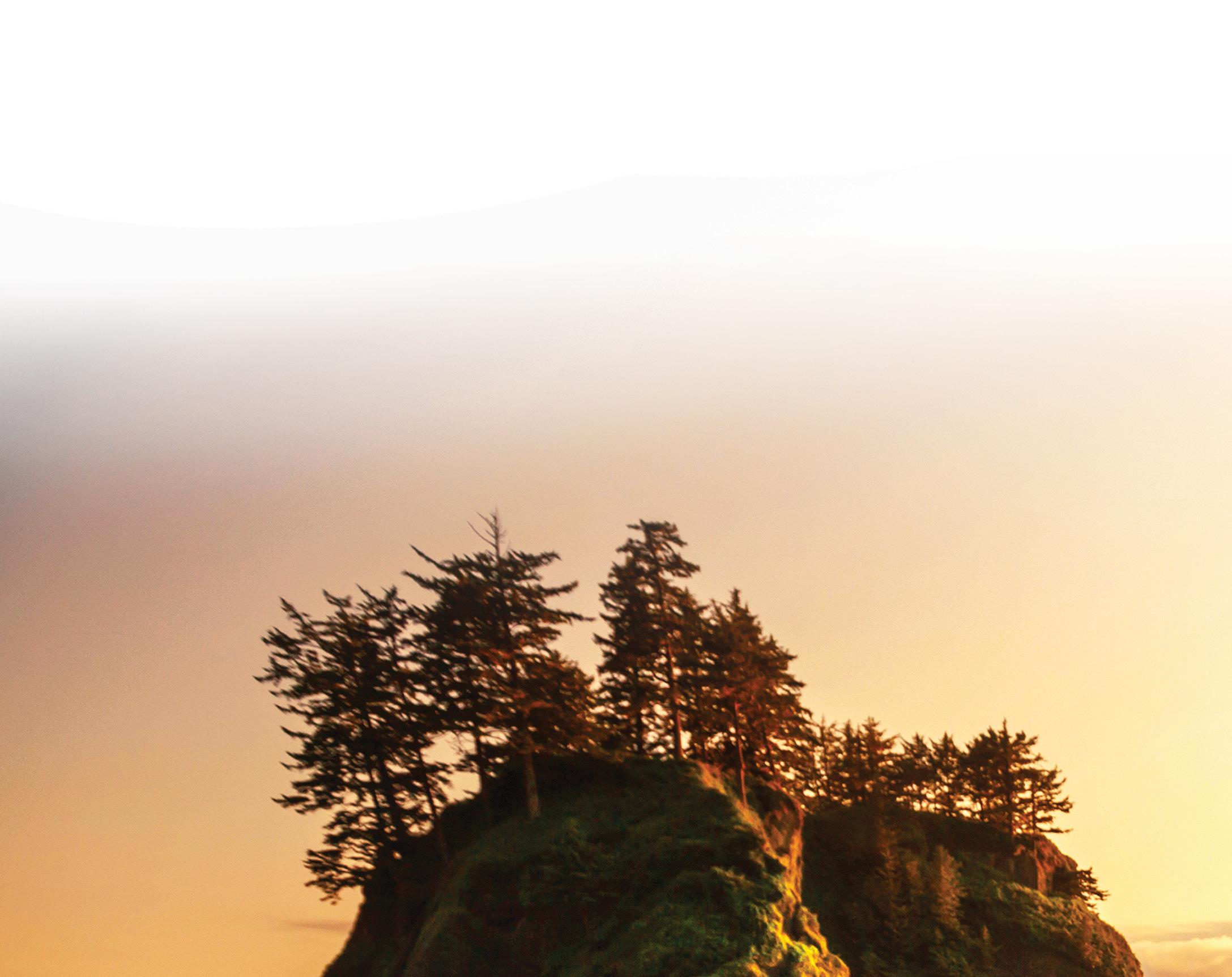
WSG celebrates the diversity of people and the environment and the complex interactions between them.
Facilitating practical and collaborative solutions to today’s ocean and coastal issues, WSG supports a culture of scientific integrity and serves as a trusted broker of place-based information and real-world expertise that honors the history, people and places of Washington.
WSG endorses and is committed to pursuing activities that advance the two cross-cutting principles identified in the National Sea Grant College Program 2024 – 2027 Strategic Plan: partnerships and diversity, equity and inclusion. In addition, WSG is committed to infusing actions to address the challenges associated with climate change throughout the program’s work.
PARTNERSHIPS National Sea Grant principle: Cultivate and sustain partnerships by integrating the expertise and capabilities of partners from international, federal, tribal, state and local communities as well as from academia, nongovernmental organizations and industry.
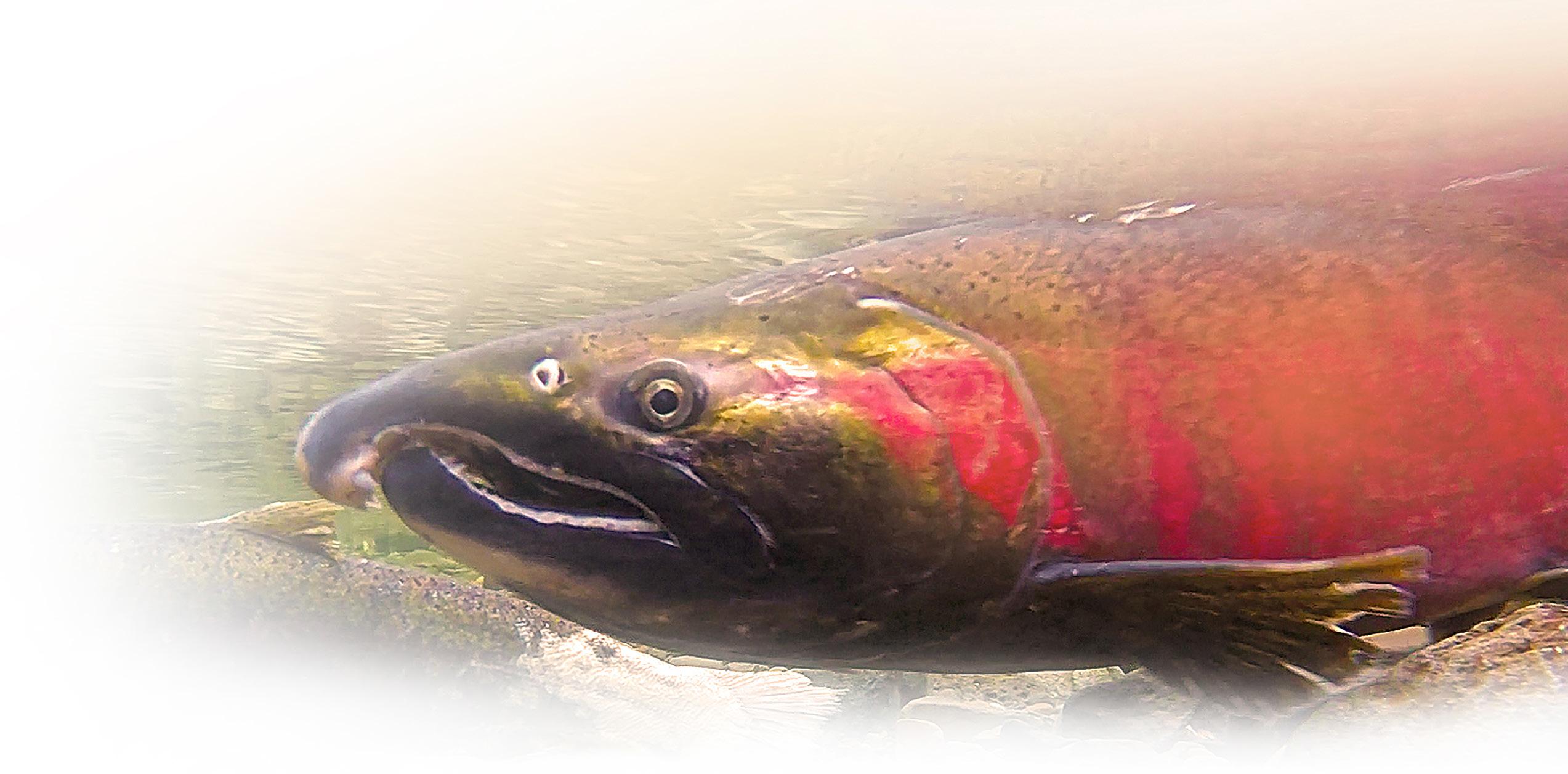
Partnerships are a cornerstone of the Sea Grant model. WSG cultivates partnerships by valuing and engaging the priorities, expertise, capabilities, and participation of diverse partners. WSG collaborates with international, federal, tribal, state and local governments; local communities; businesses; people from academia; K-12 schools and nongovernmental organizations on a wide variety of marine-related research, engagement and education projects.
DIVERSITY, EQUITY,
JUSTICE AND
To achieve organizational excellence, pursue its vision, and adhere to its mission, WSG maintains a commitment to diversity, equity, inclusion, justice and accessibilty. WSG works to create equitable access to resources and opportunities for Washington’s diverse communities and seeks to incorporate their voices and priorities. WSG’s values are informed by environmental justice and are based in a culture of inclusion, respect, long-term engagement and accountability.
WSG’s commitment to diversity, equity, inclusion, justice and accessibilty shapes the organization and its investments, practices and social interactions. Specifically, WSG strives to:
◆ create a welcoming work environment, so that each person feels accepted, valued and safe;
◆ build community and learn from each other, honoring differences in background, experience, skills, interests and values;
◆ ensure the right of all people to live and work in a clean environment;
◆ address root causes of unequal exposure to environmental hazards, and eliminate disparities in access to natural resources, opportunities and decision-making processes; and
National Sea Grant principle: Enhance diversity, equity, inclusion, justice and accessibility by seeking and integrating diverse perspectives to advance cultural understanding and enable the network to pursue its vision and mission with, and for, all audiences. We will actively create mechanisms to allow all people to participate in network activities. Bringing a range of perspectives, values and tools together to find solutions that are more innovative, creative, inclusive and responsive will help us be successful in tackling problems facing coastal and Great Lakes communities.
◆ nurture an atmosphere that encourages open, honest and respectful exchanges.
ADDRESSING CLIMATE CHANGE Current and future climate change impacts each of WSG’s program areas; addressing these impacts is essential meeting WSG’s goals. WSG pursues strategies to further climate change mitigation, adaptation and resilience across the human and ecological communities along the shorelines and coasts of Washington State.

nvironmental education is essential to build scientific literacy and help learners of all ages appreciate the importance of ocean and coastal resources and ecosystems. Despite strong physical and cultural ties to the coast, most Washington residents have significant knowledge gaps when it comes to the waters that surround them: for example, according to a 2022 report from the SeaDoc Society only five percent of Washingtonians could name the Salish Sea — the marine ecosystem that spans the United States-Canada border which includes Puget Sound.
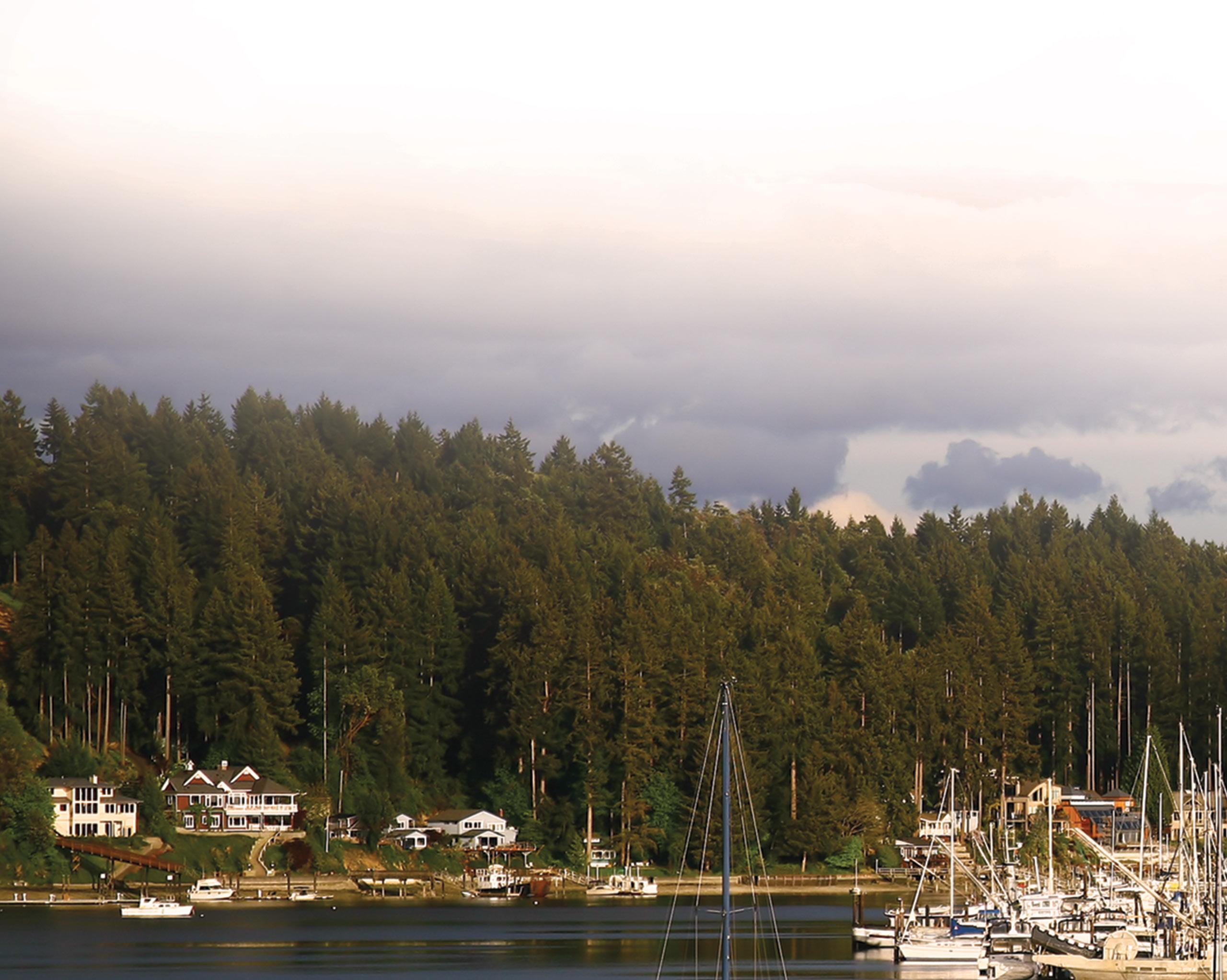
Place-based learning opportunities and interdisciplinary environmental education that encompasses multiple ways of knowing will foster a deeper sense of connection to local ecosystems as well as a better understanding of how to conserve and protect them. This improved public understanding of the ocean and of the environment at large is essential to achieving conservation and sustainability goals locally and across the world. Since 2004, high-level government commissions and task forces have called for strengthening ocean literacy through formal and informal education about the ocean and coasts. They define an oceanliterate person as one who understands ocean science, can communicate about the ocean, and is able to make informed decisions regarding the ocean and its resources.
EWashington’s ocean economy relies on a well-trained workforce capable of dealing with the complexity and diversity of its marine sector. According to the Washington State Department of Commerce, the state’s maritime industry generates more than $21.4 billion in revenue and $4.7 billion in wages annually. Sustaining and replenishing this workforce is essential to the wider economy. Nationally, the ocean sector supports one in six American jobs and 20 percent of all economic activity and the value of this “blue economy” is expected to double in value to $3 trillion over the next decade.
But these industries face a looming workforce crisis. Washington’s maritime workforce is older than the national average, and more workers now retire or quit the sector than enter it. For example, Washington State Ferries has faced worker shortages for more than two decades; when pandemic-related staff outages occurred on top of this in 2021, it resulted in hundreds of ferry cancellations, which significantly disrupted travel for thousands of people. In a similar vein, an existing national labor shortage within the seafood industry was exacerbated in 2021, contributing to an 18.8 percent rise in the wholesale price of fish and shellfish. In addition to people who are trained in these more traditional skills, Washington needs innovative workers who are educated in emerging disciplines such as marine renewable energy, especially given that marine innovation is a state priority: In 2017, Governor Jay Inslee assembled his Maritime Innovation Advisory Council, calling upon them to develop a comprehensive plan to “accelerate and support technology, innovation and best practices throughout the state’s entire maritime industry.”
These worker recruitment shortfalls reflect a lack of opportunities and pipelines into maritime fields. They also reflect a lack of scholastic opportunities in marine sciences and the underrepresentation of ocean content in state education standards. Many students, teachers and guidance counselors are unaware that many jobs within the maritime
Goal 1: An environmentally literate public reflecting the diversity of Washington participates in lifelong formal and nonformal learning opportunities.
industry are well-compensated, secure, rewarding and offer the exciting challenges the sea. Opportunities exist to engage students and parents throughout the education process, from hands-on activities in K-12 classrooms to fellowships for graduate students.
Goal 2: The future workforce is welcoming and inclusive to all people, reflects the diversity of Washington and is skilled in traditional and emerging disciplines that are critical to coastal and ocean economies and ecosystem health.

◆ Science-based traditional and new media, educational opportunities for students and outreach events promote ocean literacy and learning for all ages.
◆ Individuals consider themselves environmentally literate and lifelong learners of both science-based and traditional and ecological knowledge, and use this knowledge to support, build and restore healthy ecological and human communities.
◆ Community members use their knowledge to remove educational and professional barriers and act for personal and social resilience and adaptation to changing economic, environmental and social conditions.
◆ Rigorous community science and stewardship programs improve ocean literacy, promote sustainable ocean and coastal use, and contribute to regional science and management needs.
◆ Programs for K-16 youth, including those in tribal and underrepresented communities, enhance ocean literacy and provide a pathway to marine-related careers.
◆ Students from all backgrounds and with diverse needs are thoughtfully and intentionally supported in and have access to formal and experiential learning, training and research experiences.
◆ Increased awareness, learning opportunities and career pathways remove employment barriers for unrepresented communities and support diversity and inclusion in environmental and maritime sectors.
◆ Diverse fellowships, classes and other professional development opportunities for college students and recent graduates build a skilled workforce.
etween 1971 and 2021, Washington’s population grew by 125 percent, reaching nearly eight million. For comparison, the US population grew by 60.5 percent over that same timeframe. Nearly seven out of ten residents live in the state’s 15 coastal counties, the vast majority in the large Puget Sound urban centers. The state has the highest per capita boat usage in the country, and Washington’s recreational boat sales totaled more than $1 billion in 2021. At the same time, increasing population and regional economic trends have put pressure on many traditional maritime sectors, creating conflict with waterfront development for other purposes. In addition, some smaller coastal communities are losing resource-based employment and seeking ways to generate new economic activity.
BDespite their geographic, economic and cultural differences, the Puget Sound region and Washington’s coast must balance the traditional, sustainable uses of marine resources with emerging demands. For example, Washington tribes view the failure to adequately consider salmon recovery in coastal decision-making as a failure to respect their treaty rights. Potential new ocean uses such as marine renewable energy including wind and wave energy are vital to achieving climate mitigation goals, but enter a complexity of vital existing uses.
In addition to changing the economic landscape, the rapid growth and development of coastal communities has added stress to local coastal ecosystems. Since 1889, Washington has lost an estimated 70 percent of its estuarine wetlands — habitat that provides essential ecosystem services such as capturing carbon and filtering sediment. More than 700 miles of Puget Sound shoreline — about 30 percent of the total — are armored. About 350,000 acres of the Puget Sound basin are made up of impervious surfaces, which shed more than 370 billion gallons of stormwater runoff each year. More than 60 percent of water pollution comes from stormwater and other dispersed sources.
Not surprisingly, water quality has suffered. Planners need accurate information to make science-based decisions and preserve the services provided by coastal ecosystems and watersheds. Communities need sustainable, low-impact alternatives when considering development approaches. And residents need best practices for stewardship of local water resources.
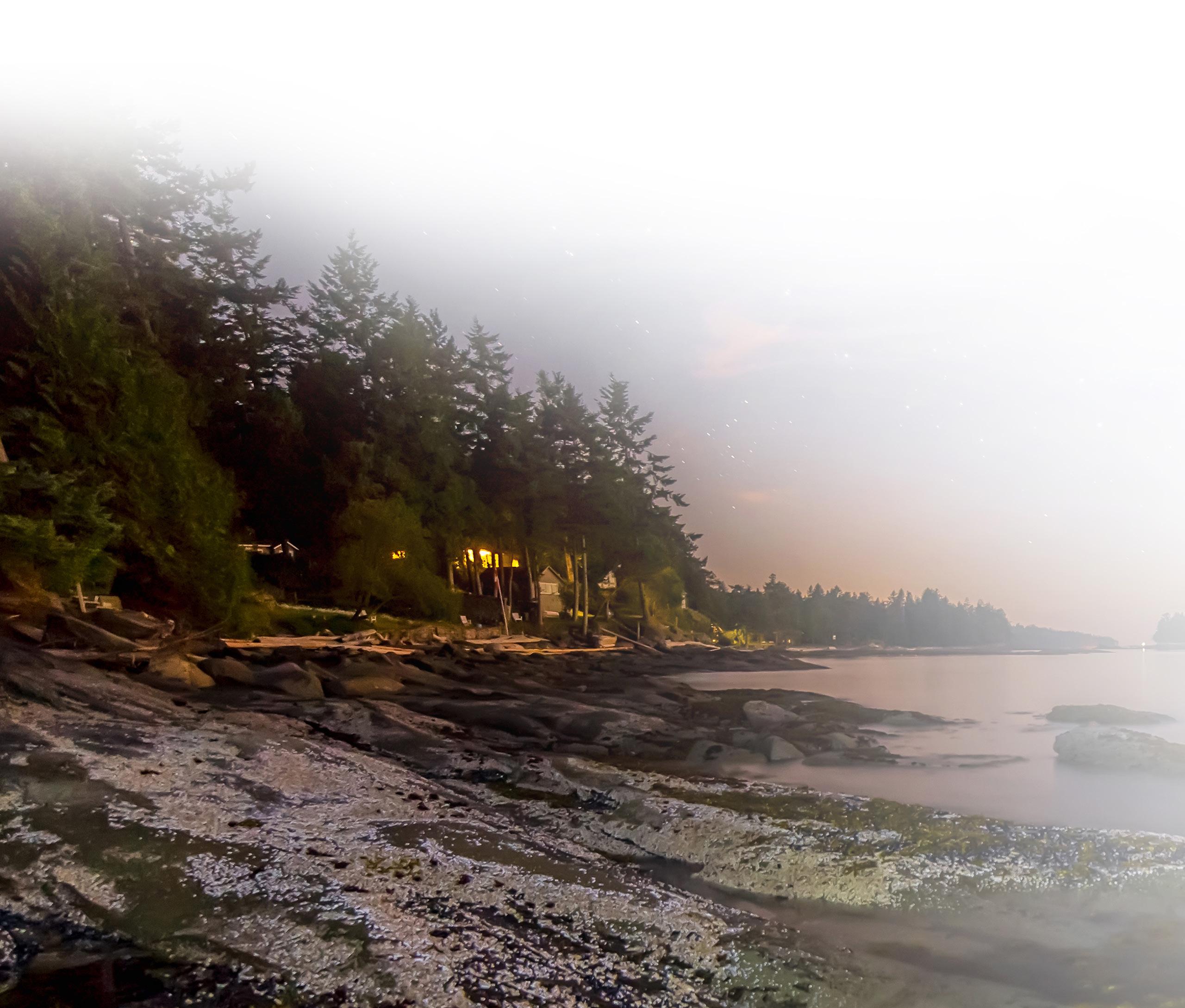
Coastal Washington is also susceptible to a wide range of natural hazards, ranging from relatively frequent threats such as flooding, landslides and erosion to rare but potentially catastrophic events such as earthquakes and tsunamis. The mountainous coastal topography and location on the windward coast of the Pacific Ocean combine to give the Pacific Northwest the nation’s stormiest coastal waters outside Alaska. Meanwhile, changing climatic conditions pose a growing threat to the region’s coastlines and communities. The 2015 report on Climate Change in Puget Sound from UW’s Climate Impacts Group catalogs a sobering list of impacts that climate change is expected to visit on Washington, including warmer temperatures, higher precipitation extremes, decreased snowpack, shifts in seasonal stream flows, lower summer hydropower production, higher risk from forest fires and increased coastal erosion. In 2018, the Washington Coastal Resilience Project — a three-year partnership between WSG, Washington State Department of Ecology, UW’s
Goal 3: Coastal communities and maritime sectors pursue analysis, planning and development of strategies that mitigate and improve resilience to climate change and coastal hazards while simultaneously improving environmental, economic, and social and cultural well-being.
Climate Impacts Group and others — published sea level rise projections for the state that demonstrate significant vulnerability to future flooding, erosion, landslides and tsunamis. The need for credible information and strategies to more effectively adapt and respond to climate-driven changes and hazards — as well as resources and technical assistance to implement these strategies — is obvious and immediate.
As Washington State comes to terms with coastal hazards, climate change and associated community vulnerability, it has prompted and increasing interest in alternative energy sources such as offshore wind. In April 2022, a developer submitted the first least request to develop an offshore wind farm in Washington. Many people in the state see this moment as Washington’s chance to become a leader in an emerging industry that has the potential to reduce dependence on fossil fuels. At the same time, this requires acquiring adequate information to address the anticipated impacts and balance these with the potential benefits.
Goal 4: The diversity of Washington at-risk communities are prepared for coastal hazards, response planning addresses systemic imbalances in access to resources.
Goal 5: Coastal water resources are enhanced, sustained and protected to meet existing and emerging needs of diverse ecosystems, communities, economies and cultural practices.
◆ Washington’s unique tribal cultures and regional maritime heritage are protected and sustained.
◆ Information and approaches from natural and social science research improve coastal management and encourage sustainable development practices.
◆ Research, partnerships, technical assistance, training programs and other tools support state and local economic development and planning needs, including plans to reduce the impacts of climate change, sea level rise and tsunamis.
◆ Engagement of managers and stakeholders facilitates and balances multiple demands for ocean and coastal resources while preserving existing sustainable uses and community priorities.
◆ Planning for marine renewable energy balances costs and benefits, including consideration of impacts to existing uses such as fishing and contribution to climate mitigation goals.
◆ Coastal communities have improved understanding of coastal hazards and climate change and their implications to people, marine businesses and ecosystems.
◆ Coastal communities have increased capacity to apply insights derived from science and other knowledge sources towards improving their resilience to coastal hazards.
◆ Enhanced partnerships, technical assistance and information aid in the assessment of vulnerabilities and improve capacity for responding and adapting to coastal hazards and climate change.
◆ Improved approaches are implemented to address toxic, nutrient and pathogen contaminants and the impact of human activities on water quality and quantity.
◆ Coastal residents, vessel operators and businesses use best practices to reduce pollution and protect marine water quality.
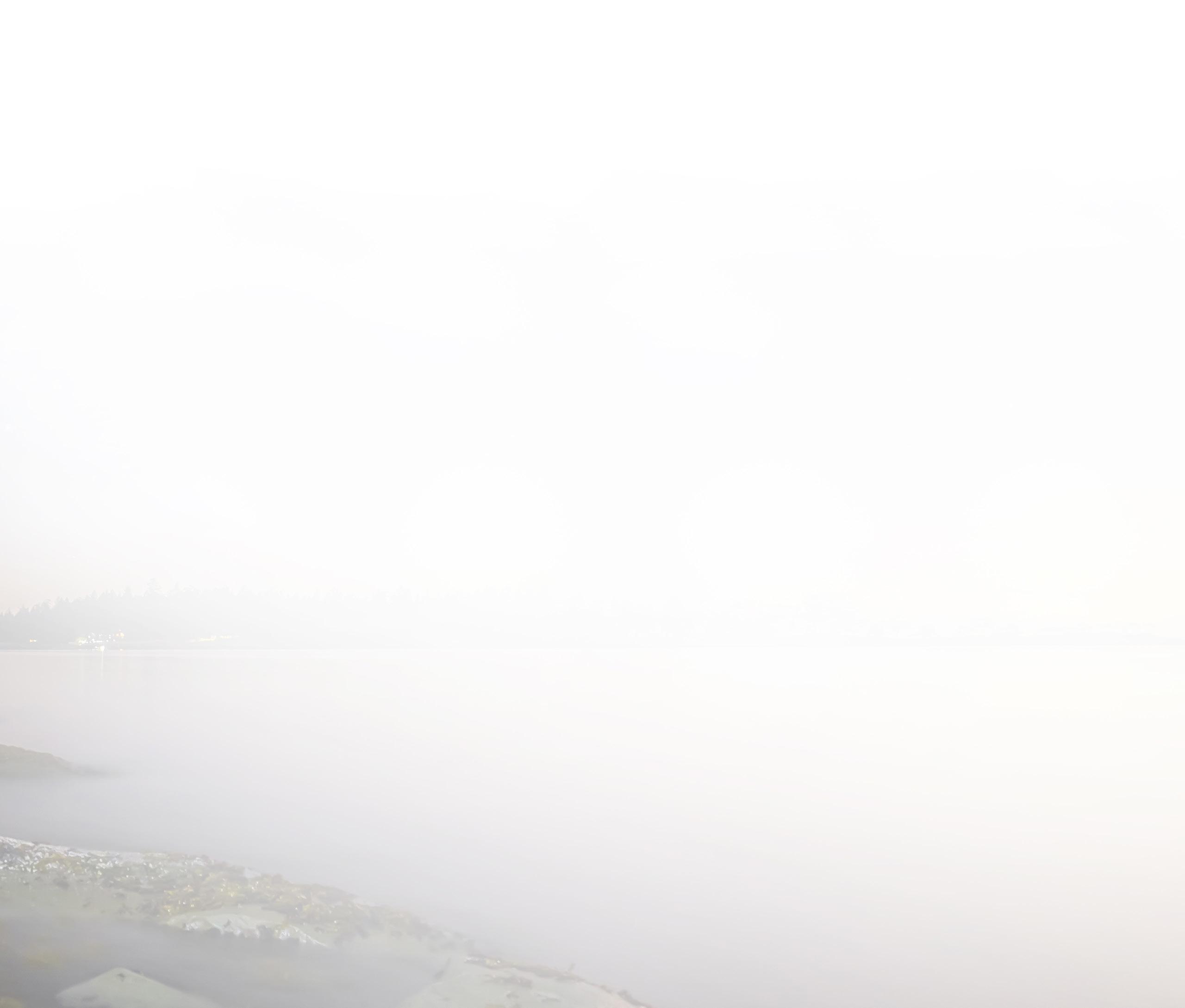

ashington is located in one of the world’s most productive marine regions. Its bountiful resources support tribal and commercial fisheries, sportfishing and recreational boating, tourism and wildlife viewing, and maritime transportation. Coastal estuaries and Puget Sound support rich eelgrass beds and mudflats, providing valuable nursery grounds for fish and shellfish.
Despite these riches, Washington faces numerous obstacles to maintaining and restoring healthy coastal ecosystems. Heavy industries have spilled creosote, lead, PCBs and other toxins. Logging, farming and urban growth have damaged sensitive watersheds, smothering salmon redds and oyster beds in runoff sediment. Hydroelectric dams choked off salmon runs so vast they once seemed indestructible. The Salish Sea’s iconic resident killer whales, which depend on declining salmon and are burdened with some of the highest PCB levels recorded in any animal, are listed as endangered. The native Olympia oyster, an early economic mainstay, has been severely depleted by overharvesting, degraded water quality, and the invasion of non-native species.
These ecological changes are occurring in the context of complex, interrelated environmental changes and stressors. A historic heatwave across the Pacific Northwest in 2021 wreaked havoc on intertidal ecosystems, providing insight into the potential consequences as the region continues to warm. The Washington coast is especially vulnerable to ocean acidification, in large part due to strong seasonal upwelling that brings acidic waters onto the continental shelf. Such changes in ocean chemistry could interfere with shell development in marine organisms, disrupting shellfish
Waquaculture and food web dynamics affecting many species. Both harmful algal blooms and hypoxic events continue to cause mortality in local species and damage the state’s fishing and aquaculture industries. Aquatic invasive species also pose a serious biological threat to coastal ecosystems.
WSG Crab Team made the first detection of the highly invasive European green crab in Puget Sound in 2016. Since then, increasing detections in the Salish Sea and coastal estuaries led to disaster declarations by the Lummi Nation and the Shoalwater Bay Tribe, and an emergency order by the Washington State Governor in 2022. European green crab threatens productive eelgrass beds that are critical to Dungeness crab, salmon, forage fish and waterfowl habitat; and poses a threat to valuable commercial, recreational and cultural resources.
Meanwhile, as more individuals make coastal Washington home, they make changes — removing trees, building homes and businesses, paving roads and parking lots, clearing out and filling in streams, and using concrete and rocks to harden shorelines. Past development activities have significantly altered the natural structure, functions, processes and aesthetics of Washington’s shorelines. Loss of habitat is a major contributor to species decline, and salmon recovery is a primary driver of habitat management decisions in Washington. Public interest in and support for habitat protection and restoration has grown, but new approaches are needed, including the protection of intact shorelines, the enhancement and rehabilitation of already modified habitats, and the development of strategies to inform local restoration projects.
There is growing recognition of the need for ecosystembased management that is place-based, explicitly accounts for the interconnectedness within and among systems, and integrates ecological, social, economic and institutional perspectives. But our limited knowledge of ecosystem structure and function, together with our limited capacity to understand and prioritize threats and grasp their social impacts, hampers our ability to effectively manage our environment.
Goal 6: Ocean and coastal habitats, ecosystems and living marine resources are valued and understood, leading to their protection, enhancement and restoration.
Goal 7: Ocean and coastal resources are protected and managed by applying sound science and technologies, local and traditional knowledge, and ecosystem-based approaches to foster responsible use through ongoing environmental change.
Goal 8: The diversity of Washington’s communities have access to use, enjoy and benefit from coastal environments and resources, and decision-making around protecting, enhancing and restoring these ecosystems is inclusive, equitable and just.

◆ Understanding of ocean and coastal ecosystems, habitats and living marine resources is improved.
◆ Enhanced information and capacity help to address social, economic and cultural considerations in ecosystem-based management.
◆ Information and approaches improve to address environmental stressors like ocean acidification, harmful algal blooms, heat stress, hypoxia and aquatic invasive species.
◆ Improved understanding and technologies contribute to the effective conservation of protected species and rebuilding of depleted marine populations.
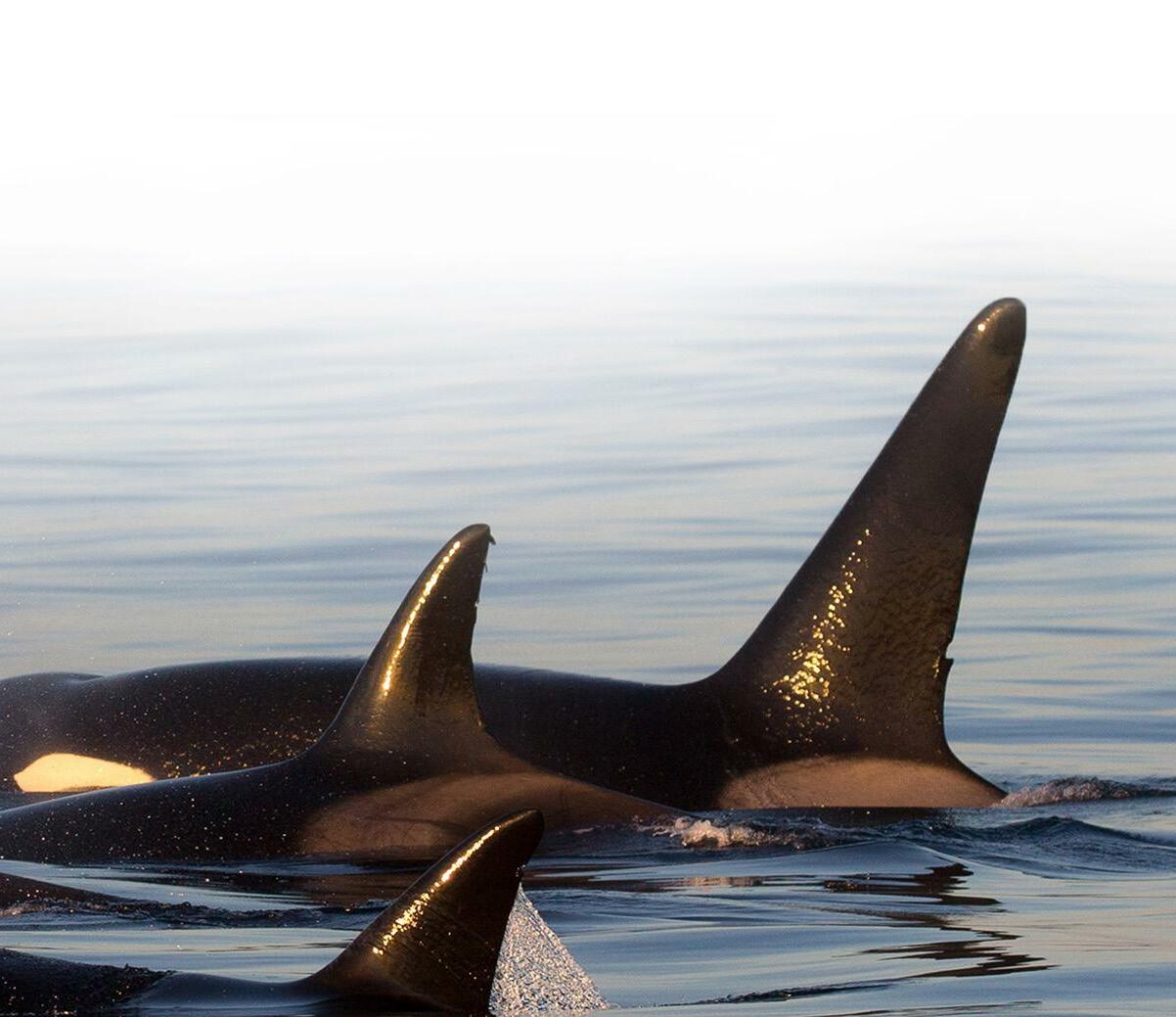
◆ Effective approaches and technologies are used to mitigate climate change and to protect, enhance and restore ecosystem function and services.
◆ Diverse stakeholders participate in inclusive collaborations and partnerships that support planning, research and innovative solutions to address coastal resource management needs, especially for vulnerable communities.
Seafood harvesting is a vital part of Pacific Northwest culture and commerce. From tribal fishermen exercising their treaty rights to oyster farmers in south Puget Sound, the lives of Washington’s people are intertwined with its living marine resources. Despite the instability and grueling physical nature of the work, many commercial fishers and shellfish farmers see their jobs as integral to their way of life and identity. And many more enjoy the fruits of their labors through consuming delicious, high-quality protein filled with omega-3 fatty acids and vitamins that promote good health. For many Indigenous people in the state, the connections to seafood run even deeper; through harvest and consumption they participate in cultural practices and traditions that have persisted since time immemorial.
Washington’s living marine resources sector — commercial and recreational fishing, aquaculture, and seafood processing and sales — is also an economic staple of the state, providing more than 15,000 jobs and generating millions of dollars. This is in large part thanks to the state’s role as homeport to the North Pacific fishing fleet, the largest fishing enterprise in the nation. Washington’s waters also support a vigorous aquaculture industry, producing more farmed clams, oysters and mussels than any other state.
The diversity of the state’s coastal marine habitats also has supported longstanding traditions of recreational and subsistence harvest. In 2015 residents and visitors purchased 192,000 shellfish harvesting licenses and 322,000 combined shellfish and fishing licenses, injecting more than $12 million into state coffers. Less common forms of aquaculture — in particular, seaweed aquaculture — are rapidly gaining momentum, with nascent commercial ventures taking off in the state.
Despite their value, the state’s fishing and aquaculture industries face many challenges. For example, in January 2017 NOAA declared disasters in six Washington fisheries, including coastal salmon and Dungeness crab fisheries and several tribal salmon fisheries in Puget Sound. While coastal stocks of canary rockfish and petrale sole have rebounded, a few groundfish populations in the Pacific fishery have yet to rebuild. More recently, the sudden loss of overseas and wholesale markets during the COVID-19 pandemic had crushing impacts to many businesses. And in recent years, some fisheries have undergone severe conservation restrictions, including closures of ocean salmon fisheries. The aquaculture industry also faces challenges from environmental stresses such as ocean acidification and harmful algal blooms. Some regional shellfish hatcheries experienced significant losses and have altered management practices to compensate for changing environmental conditions. For both healthy and at-risk populations, improved understanding of population dynamics and environmental factors enhances the ability to sustainably manage living marine resources.
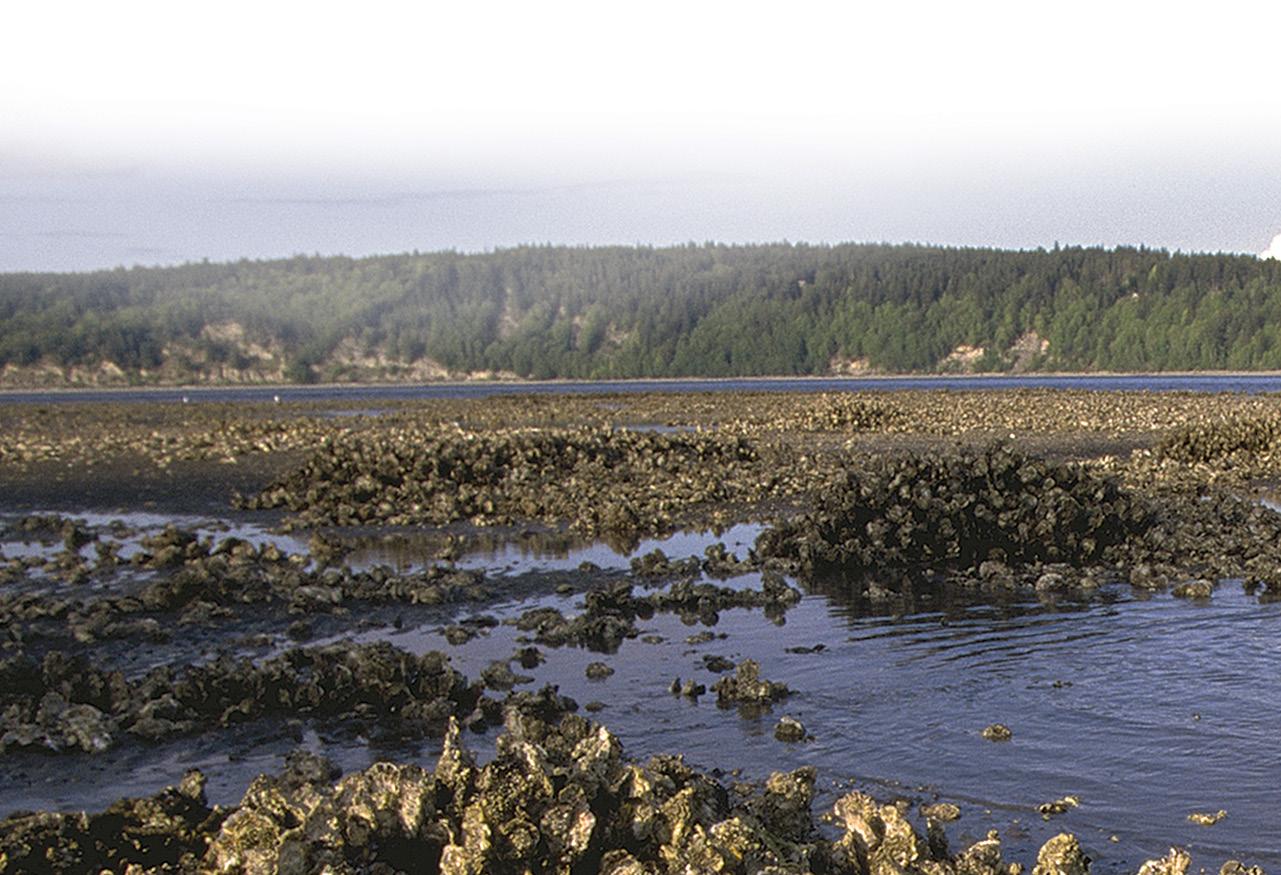
Meanwhile, the fishing and aquaculture industries face an economically competitive environment. The share of seafood consumed in the United States that is imported has climbed steadily, reaching an estimated 70-85 percent, driving the national seafood trade deficit to $17 billion in 2020. In Washington, commercial fishermen seek marketing strategies and product niches that can sustain their industries. Shellfish growers face use conflicts, environmental concerns, shoreline development issues and a shortage of data on economic benefits and trade-offs.
Goal 9: Fisheries and aquaculture continue to supply wholesome seafood, jobs and economic and cultural benefits, including the protection of resources for tribal harvests.

While commercial fishing, especially in tribal fisheries, has become much safer in recent years, thanks in part to WSG’s training and outreach efforts, more work remains to ensure safety for all involved in this sector. Many deaths in commercial fishing are preventable. Relevant, targeted and accessible training can also make fishing operations more efficient and profitable. Finally, there is a need to maintain the safety and quality of seafood products, which requires research, technical assistance and public outreach. Consumer demand is strong for safe, high-quality seafood from sustainable sources, and filling that demand can advance both human health and commercial profitability.
Goal 10: Natural resources are sustainably managed to support communities and industries including commercial, recreational, subsistence fisheries and aquaculture.
◆ Information, tools, technical assistance and training support sustainable aquaculture operations, maritime worker safety and well-being, product quality, and vibrant and resilient fisheries and aquaculture.
◆ Tribal commercial and subsistence fisheries and aquaculture initiatives and harvests are supported through partnerships that facilitate the exchange of traditional and ecological knowledge.
◆ Community members have access to wholesome and high-quality wild-harvested and cultured seafood products.
◆ Understanding of environmental factors that affect fisheries and aquaculture and fishery and aquaculture resources is improved.
◆ Tools and approaches are used to improve fisheries and aquaculture management, productivity, and ecological and economic sustainability under changing environmental conditions.
◆ Number of resource managers who use ecosystem-based approaches in the management of land, water, and living resources as a result of Sea Grant activities
◆ Number of acres of coastal habitat protected, enhanced, or restored as a result of Sea Grant activities
◆ Number of fishermen, seafood processor, aquaculture industry personnel and seafood consumers who modify their practices using knowledge gained in fisheries sustainability and seafood safety as a result of Sea Grant activities
◆ Number of communities that adopt/ implement sustainable economic and environmental development practices and policies as a result of Sea Grant activities
◆ Number of stakeholders who use sustainable approaches to address development, marine resource use, water quality, hazards and ecosystem health in marine and coastal areas as a result of Sea Grant activities.
◆ Number of communities that adopt/implement hazard resiliency practices to prepare for and respond to/ minimize coastal hazardous events as a result of Sea Grant activities
◆ Number of Sea Grant products that are used to advance environmental literacy and workforce development
◆ Number of people engaged in Sea Grant-supported informal education programs
◆ Number of Sea Grant-supported graduates who become employed in a job related to their degree within two years of graduation
◆ Annual number of stakeholders who receive information about marine and coastal ecosystems and issues as a result of Sea Grant outreach, communication, education or research programs
◆ Number of Sea Grant tools, technologies and information services that are used by our partners/customers to improve ecosystem-based management
◆ Economic and societal impacts and benefits derived from Sea Grant activities impacts derived from Sea Grant activities (market and non-market; jobs and businesses created or sustained; patents/licenses)
◆ Number of peer-reviewed publications produced by Sea Grant
◆ Number of Marinas Certified as “Clean Marina” by the Clean Marina Program as a result of Sea Grant Activities
◆ Number of individuals certified or recertified in Hazard analysis critical control point (HACCP) as a result of Sea Grant activities
◆ Number of individuals and full-time equivalents (FTEs)
◆ Number and Origination of Core Funding Pre-and Full Proposals
◆ Number of Postsecondary Students Financially-Supported by Sea Grant
◆ Number of Postsecondary Degrees Financially-Supported by Sea Grant
◆ Number of P-12 students who participated in Sea Grantsupported education programs
◆ Number of P-12 students reached through Sea Granttrained educators
◆ Number of educators who participated in Sea Grantsupported professional development programs
◆ Number of Volunteer Hours
◆ Number of Sea Grant-Sponsored/Organized Events
◆ Number of Attendees at Sea Grant-Sponsored/Organized Events
◆ Number of Public or Professional Presentations
◆ Number of Attendees at Public or Professional Presentations
This is a publication of the University of Washington pursuant to a National Oceanic and Atmospheric Administration Award. The views expressed herein are those of the authors and do not necessarily reflect the views of NOAA or any of its sub-agencies. Projects and programs described in this publication receive funding from a variety of organizations, including NOAA and other federal agencies, the State of Washington, the University of Washington, private foundations and other sources.


The University of Washington reaffirms its policy of equal opportunity regardless of race, color, creed, religion, national origin, sex, gender identity, sexual orientation, age, marital status, disability, or status as a protected veteran in accordance with UW policy and applicable federal and state statutes and regulations. This policy applies to all programs and facilities, including, but not limited to, admissions, educational programs, employment, and patient and hospital services. Any discriminatory action can be a cause for disciplinary action.
3716 Brooklyn Avenue NE Seattle, WA 98105-6716
206.543.6600
seagrant@uw.edu
wsg.washington.edu